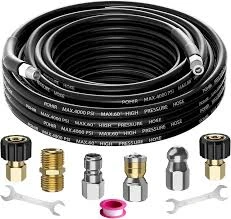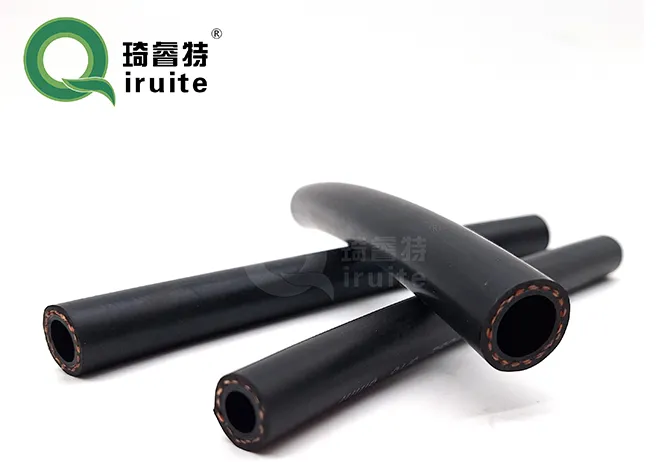Feb . 12, 2025 22:16
Back to list
spiral guard hose protection
Fixing a leaky power steering hose can be a daunting task, but with the right tools and knowledge, you can manage this automotive issue effectively. A power steering system is crucial for the smooth operation of your vehicle, providing the necessary hydraulic assistance to make steering easier. A leak in this system not only affects your car's performance but can also lead to more significant, costly repairs if not addressed promptly.
5. Remove the Damaged Hose Use the wrench set to detach the hose fittings. Carefully remove the damaged power steering hose, ensuring not to damage any other components in the process. 6. Install the Replacement Hose Position the new hose, ensuring it’s the correct size and type for your vehicle. Reattach the fittings, taking care to ensure they're tightly secured to prevent future leaks. 7. Refill the Fluid After the new hose is installed, refill the power steering fluid reservoir with fresh fluid. Be sure to use the type recommended by your vehicle's manufacturer for optimal performance. 8. Bleed the System Start the engine and turn the steering wheel from lock to lock several times to bleed air from the system. This process is crucial for preventing air bubbles, which can affect steering performance. 9. Check for Leaks Turn off the engine and inspect the replaced hose and fittings for any signs of leakage. If needed, tighten the connections and ensure that the system is operating smoothly. Maintenance and Prevention Tips To prevent future leaks, make regular inspections of your power steering system a part of your maintenance routine. Check fluid levels often, and look for any signs of wear or damage to hoses and connections. Use only high-quality power steering fluid, and follow the manufacturer’s recommendations for replacements. When to Seek Professional Help If you're uncertain or uncomfortable with performing this repair, or if the leak persists despite replacing the hose, consult a professional mechanic. Neglecting power steering issues can lead to dangerous driving conditions and more expensive repairs down the line. This hands-on guide aims to empower drivers with the expertise to handle minor vehicle repairs and understand when it's essential to enlist professional services. Taking proactive measures will enhance your vehicle's longevity and ensure safer driving experiences.


5. Remove the Damaged Hose Use the wrench set to detach the hose fittings. Carefully remove the damaged power steering hose, ensuring not to damage any other components in the process. 6. Install the Replacement Hose Position the new hose, ensuring it’s the correct size and type for your vehicle. Reattach the fittings, taking care to ensure they're tightly secured to prevent future leaks. 7. Refill the Fluid After the new hose is installed, refill the power steering fluid reservoir with fresh fluid. Be sure to use the type recommended by your vehicle's manufacturer for optimal performance. 8. Bleed the System Start the engine and turn the steering wheel from lock to lock several times to bleed air from the system. This process is crucial for preventing air bubbles, which can affect steering performance. 9. Check for Leaks Turn off the engine and inspect the replaced hose and fittings for any signs of leakage. If needed, tighten the connections and ensure that the system is operating smoothly. Maintenance and Prevention Tips To prevent future leaks, make regular inspections of your power steering system a part of your maintenance routine. Check fluid levels often, and look for any signs of wear or damage to hoses and connections. Use only high-quality power steering fluid, and follow the manufacturer’s recommendations for replacements. When to Seek Professional Help If you're uncertain or uncomfortable with performing this repair, or if the leak persists despite replacing the hose, consult a professional mechanic. Neglecting power steering issues can lead to dangerous driving conditions and more expensive repairs down the line. This hands-on guide aims to empower drivers with the expertise to handle minor vehicle repairs and understand when it's essential to enlist professional services. Taking proactive measures will enhance your vehicle's longevity and ensure safer driving experiences.
Latest news
-
Ultimate Spiral Protection for Hoses & CablesNewsJun.26,2025
-
The Ultimate Quick-Connect Solutions for Every NeedNewsJun.26,2025
-
SAE J1401 Brake Hose: Reliable Choice for Safe BrakingNewsJun.26,2025
-
Reliable J2064 A/C Hoses for Real-World Cooling NeedsNewsJun.26,2025
-
Heavy-Duty Sewer Jetting Hoses Built to LastNewsJun.26,2025
-
Fix Power Steering Tube Leaks Fast – Durable & Affordable SolutionNewsJun.26,2025

